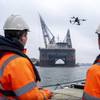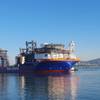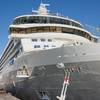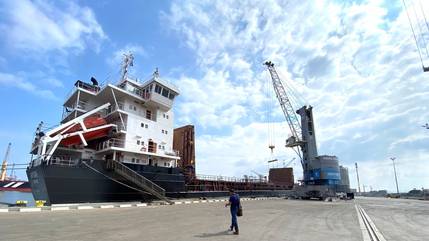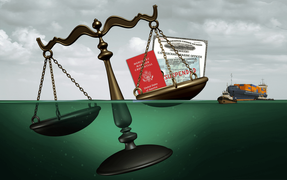Maritime Trafficking: How Balkan Gangsters Became Europe's Top Cocaine Suppliers
In 2018, convicted cocaine trafficker Slobodan Kostovski fled a Brazilian prison and made his way back to Europe with a fake passport.
The Serbian senior quickly fell into old habits, police allege. Last August, Kostovski was arrested in Belgrade, accused of shipping 2.7 metric tonnes of cocaine from Brazil aboard a 22-meter vessel apprehended near Spain’s Canary Islands.
Nicknamed “the General” by his associates, he had been trafficking “large amounts” of powder to “Europe for a long period of time,” Serbian police wrote in a 2022 intelligence report obtained exclusively by Reuters. Kostovski, now 70, had lived in Brazil for years. It’s a perch that allowed him to forge strong ties with cocaine producers in neighboring Colombia, Bolivia and Peru, and arrange ocean transport of the drugs to Europe, according to the Serbian document.
Kostovski, who has yet to enter a plea, now sits in a Belgrade jail awaiting trial, according to a spokeswoman for the high prosecutor’s office. Kostovski’s lawyer, Stefan Jokic, declined to comment.
Kostovski’s return to Europe in 2018 coincided with an auspicious moment for the continent’s cocaine trade. As South American production surged over the past decade, Balkan traffickers were perfectly positioned to stoke European demand, authorities say. They now dominate the complex logistics of moving coke from Andean production labs to street sellers in Paris, London and Berlin, helping to transform Europe into the world’s No. 1 cocaine market, Reuters reporting shows.
They’ve done it by tapping criminal contacts in Balkan diaspora communities on both sides of the Atlantic, and by infiltrating the maritime shipping system that moves an estimated 90% of the world’s trade in goods, according to U.S., European and Latin American counter-narcotics officials.
“When we talk about large-scale shipments to supply the European continent, the only group that’s hegemonic is the Balkans,” said Ivo Silva, a Brazilian federal police detective who investigated Kostovski in the late 2000s as part of Operation Niva, one of the first major probes into Balkan cocaine traffickers operating out of Brazil.
Balkan trafficking outfits have eschewed the top-down, territorial structure of cartels from Mexico and Colombia, working instead in small cells that are highly mobile, secretive and capable of moving astonishingly large loads of cocaine, counter-narcotics officials said. While the gangs aren’t monolithic and have engaged in their own bloody, internecine feuds, collectively these cliques have been dubbed the Balkan Cartel by law enforcement. Their networks have proved difficult to penetrate and even harder to topple.
“There is no strict hierarchical structure to the Balkan Cartel,” a former U.S. Drug Enforcement Agency (DEA) official who has investigated these gangs told Reuters. “There’s no godfather.”
Balkan fingerprints can now be found on most of the cocaine that enters Europe each year, U.S. and European counter-narcotics officials said. The Maritime Analysis and Operations Centre, a European agency that coordinates narcotics busts in Atlantic waters, said a record 9.11 metric tonnes of cocaine linked to Balkan criminals was seized at sea last year, a 300% increase since 2015.
Recent seizure data suggests Europe’s cocaine surge – and the Balkan traffickers driving it – are not slowing down. In the Belgian port of Antwerp, Europe’s top gateway for South American cocaine, authorities seized a record 116 metric tonnes last year. Dutch customs nabbed almost 60 metric tonnes in 2023, up nearly a fifth from the 2022 total.
The Balkans region is a peninsula in southeastern Europe stretching from the Adriatic Sea to the Black Sea. While geographic definitions differ, countries widely considered to be Balkan states include Albania, Bosnia and Herzegovina, Bulgaria, Croatia, Kosovo, Montenegro, North Macedonia, Serbia, Slovenia and Romania. Authorities say the region’s long history of seafaring, smuggling and migration has been pivotal to the rise of Balkan traffickers.
This article is based on thousands of pages of police records, intelligence reports and court documents from Europe, the United States and Latin America, as well as interviews with more than two dozen officials on both sides of the Atlantic. The material portrays Balkan traffickers as an enterprising group of logistics specialists grafted to every link of the cocaine supply chain, a position that has made them indispensable to other syndicates looking to move loads out of South America.
Balkan criminals “are more than happy to work with Israelis, Dutch, Swedes, Dominicans, Chinese triads,” the ex-DEA official said. “They’ll work, really, with anybody.” However, they have largely steered clear of the United States, he said, dissuaded by the dominance of the Mexican cartels and tougher U.S. policing.
The ascent of Balkan gangs to the upper echelons of the global coke trade has police scrambling to keep pace. Cocaine seizures in western and central Europe reached a record 315 metric tonnes in 2021, according to the most recent data from the United Nations Office on Drugs and Crime (UNODC), outstripping the 250 metric tonnes seized in the United States. The purity of Europe’s cocaine has climbed steadily over the past decade, the UNODC said, a sign of its abundance.
With the continent drowning in blow, drug-related killings now rival terrorism as the European Union’s top security threat, according to the bloc’s Home Affairs Commissioner Ylva Johansson.
Swedish Prime Minister Ulf Kristersson last year enlisted his nation's army to help quell narcotics-linked gang violence that has included bomb attacks and child assassins. In March, Greek authorities dismantled a warring Balkan gang allegedly responsible for more than 60 murders across Europe over the last decade. That same month, the streets of Brussels were rocked by multiple gun battles allegedly involving the Albanian mafia.
In Latin America, the Balkan presence is now stronger than ever, according to an investigator from the Balkan task force of European police agency Europol. The official said there are more than 50 major trafficking cells from the Western Balkans working across Latin America, with hundreds of gangsters scattered around the region.
Brazilian federal police detective Alexandre Custodio, who last year led a major operation against Balkan smugglers, said he had been “impressed” by their dominance of the trans-Atlantic cocaine trade.
“Right now in Latin America they are the main mafia in maritime trafficking,” he said.
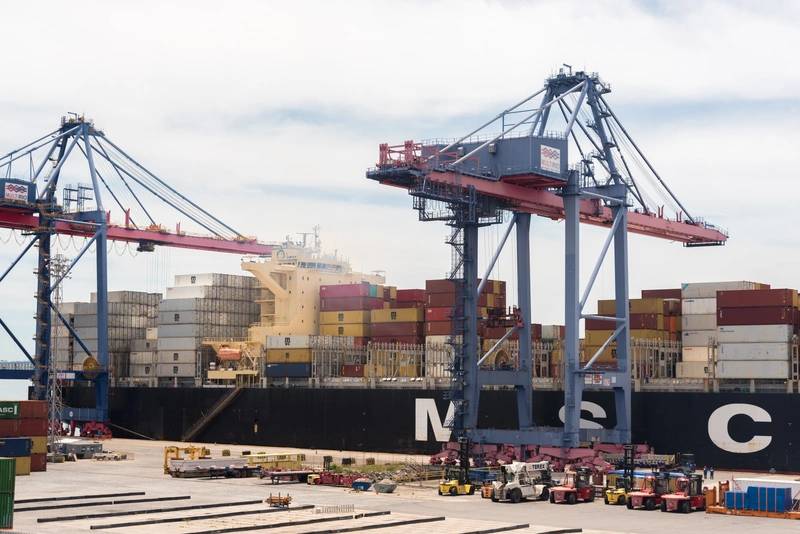 © Donatas Dabravolskas / Adobe Stock
© Donatas Dabravolskas / Adobe Stock
Embedding in Latin America
Authorities say the preeminence of Balkan criminals in the global cocaine trade is the fruit of their two-decade investment in people and connections on both sides of the Atlantic.
Following the breakup of Yugoslavia in 1991 and the decade of ethnic conflict that followed, Balkan criminals built thriving smuggling operations out of the chaos. When peace settled over the region in the early 2000s, some of them headed to Latin America in search of new opportunities.
There they built alliances with powerful crime groups, including the Revolutionary Armed Forces of Colombia and Brazil’s First Capital Command, to help them source and transport cheap cocaine, counter-narcotics officials said.
Their gradual mastery of the trans-Atlantic smuggling route was aided by maritime know-how gained through centuries of Balkan seafaring. Thousands of men from the region work on cargo ships, some of whom have proven susceptible to corruption or coercion, according to counter-narcotics authorities, police reports and court documents. Balkan traffickers bribe or threaten Balkan sailors to tamper with shipping containers, stash cocaine in their belongings, or haul it onto their vessels from smaller boats while out at sea.
Back on land, criminals within Europe’s Balkan diaspora community have provided distribution and retail infrastructure for street sales, giving the Balkan Cartel a presence along the entire supply chain, authorities said.
Kostovski, the jailed Serb, was part of the first wave of these gangsters to bet his future on Latin America, according to Brazilian police.
He came onto their radar in 2006, following a tip from German cops, according to the 3,025-page Operation Niva report prepared by Brazil’s federal police. By then, Kostovski had compiled “a very long criminal record” that included armed robbery, manslaughter and jailbreaks in Sweden and the Netherlands, according to a 1989 ruling by the European Court of Human Rights.
After landing in Latin America, Kostovski smuggled cigarettes from Paraguay before expanding “to other illicit activities such as drug and arms trafficking and money laundering,” according to a previously unreported U.S. intelligence report obtained by Reuters.
By 2006, he had established himself in the coastal city of Vilha Velha, near the port of Vitoria. There he lived in a beachside apartment with his Brazilian wife and their son, according to the Operation Niva report.
Kostovski’s decision to settle in Brazil was no accident, law enforcement officials said, given its extensive coastline and proximity to cocaine-producing nations.
“There was a concerted strategic effort early on to send representatives of various Balkan Cartel groups to South America to settle down, to make roots, to marry locals,” the ex-DEA official said. “Eventually many of them became promiscuous brokers” of cocaine.
Kostovski traveled frequently, using passports with fake names that made his movements difficult to track, according to the U.S. and Brazilian intelligence documents.
The ex-DEA agent said police around the world were slow to recognize how big Balkan players had become, in part because these traffickers excel at hopping between jurisdictions on phony documents.
Maritime dominance
An epic bust made clear they were a force to be reckoned with.
In June 2019, U.S. authorities seized around 18 metric tonnes of cocaine – worth over $1 billion – hidden aboard a cargo vessel named the MSC Gayane. The Rotterdam-bound ship had docked in Philadelphia after a voyage to Latin America.
The seizure, one of the largest cocaine hauls in U.S. history, revealed just how deeply Balkan cartels had burrowed into the ocean shipping industry, and specifically the Mediterranean Shipping Company, the vessel’s owner. Known as MSC, the Geneva-based firm is the world’s largest shipping company. It’s also a major employer of Balkan seamen and operates a crew training center in Montenegro.
Eight MSC Gayane crew members – including five Montenegrins and a Serb – were ultimately convicted of smuggling the cocaine in an audacious nighttime operation that involved hauling drugs onto the vessel from trailing speed boats. Lawyers for the convicted Balkan seamen either didn’t reply or declined to comment.
Goran Gogic, a Montenegrin former heavyweight boxer whom prosecutors allege was the chief logistician behind the shipment, is currently jailed in New York City awaiting trial. His lawyer, Joseph Corozzo, said Gogic maintained his innocence.
 About 35,000 pounds of cocaine discovered in seven shipping containers aboard the containership MSC Gayane in the Port of Philadelphia on June 17, 2019. (Photo: Steve Sapp, CBP Office of Public Affairs)
About 35,000 pounds of cocaine discovered in seven shipping containers aboard the containership MSC Gayane in the Port of Philadelphia on June 17, 2019. (Photo: Steve Sapp, CBP Office of Public Affairs)
MSC told Reuters that cocaine smuggling was “an industry-wide issue requiring an industry-wide response.” The company said it had strengthened security measures after the 2019 incident with tens of millions in annual investments, including in technology. All of its contractors are thoroughly vetted, MSC added.
Previously unreported Brazilian police documents show Balkan gangsters had been targeting MSC ships in South America for over a decade before the big U.S. bust.
In September 2010, federal police working the Operation Niva probe seized 29 kilos of cocaine hidden in bags of groceries carried by two Montenegrin seamen as they attempted to board their cargo ship, the MSC Sandra, which had docked in the Port of Paranaguá in southeastern Brazil.
The sailors, Dragan Jovanovic and Vladimir Bulajic, were convicted and sentenced to nine and a half years in prison in São Paulo state. So was Boris Perkovic, the Brazil-based Montenegrin whom prosecutors said supplied them with the drugs.
Perkovic – whom police said also worked with Kostovski’s crew in Vilha Velha – was released in 2018 and died two years later, according to records from Brazil’s federal and state courts. Reuters was unable to reach Jovanovic and Bulajic, who are now free.
MSC declined to comment on the case.
The company's ships were also at the heart of Kostovski’s trafficking scheme, according to the Operation Niva report.
From his base in Espírito Santo state, Kostovski and his crew hatched a plan to piggyback on one of the region’s top exports. The state is the capital of Brazil’s ornamental stone industry, shipping boatloads of marble and granite slabs around the world. Kostovski and his team planned to hollow out the blocks, hide cocaine in the recesses, then ship them to Eastern Europe, the Operation Niva report said.
In July 2010, the report said, Kostovski’s right-hand man, a Macedonian named Branislav Panevski, rented a discreet warehouse near Vitoria’s port to carry out the work. As the date for exporting the stones approached, Panevski told a Brazilian supplier that only one shipping company would do. “We only need MSC,” he said, according to a police transcript of the wiretapped call.
MSC declined to comment on the police transcript.
Ultimately, the gang’s scheme foundered. In early November 2010, Brazil’s federal police raided Panevski’s warehouse, where they found nearly 159 kilos of cocaine hidden in one of the stones. Panevski and Kostovski were both arrested and received 20-year sentences for international drug trafficking. Sandra Kostovski, who helped finance her husband’s operation by smuggling cash into Brazil on flights from Europe, received a 14-year sentence. She is now free. She declined to comment.
Panevski was jailed in the western state of Mato Grosso do Sul. In 2019, he fled during a brief furlough, making his way with a fake ID to Bolivia, where he was eventually caught and returned to Brazil to serve his time. He has since been released, according to a federal police officer who is investigating Kostovski’s Brazilian network. Panevski could not be reached for comment.
Kostovski, too, slipped away during a 2018 prison furlough, using a false passport to return to Europe, according to the federal police officer.
Around that time, European police began to investigate two encrypted communications services – EncroChat and Sky ECC – that they believed were widely used by gangsters. Within a couple of years, French, Dutch and Belgian cops had tapped into the channels. Across tens of millions of chats, they discovered a buzzing underworld ecosystem where suspects talked openly of drug smuggling, gun running and murder plots. EncroChat and Sky ECC have both ceased operating. But the repercussions of the intercepts continue to this day, with more than 6,500 arrests since 2020, according to Europol.
The legality of the police intercepts has been challenged by convicted gangsters and their lawyers in appeals courts across Europe. In the United States, the prosecution of Gogic, the purported mastermind of the MSC Gayane shipment, rests in part on intercepted Sky ECC chats, according to his lawyer, who said he’ll dispute their admissibility.
The U.S. Department of Justice declined to comment.
European authorities have defended their methods as lawful and say numerous crimes were prevented by the intercepts. Europol said last year that these communications revealed “the important role of criminal networks … (from) the Balkan region in the global cocaine trade.”
In late 2021, when Belgrade police accessed the chats, they realized Kostovski was back in the game following his escape from Brazil, coordinating “drug shipments via encrypted platforms,” Serbian and Spanish police reports obtained by Reuters show.
For more than a year, cops tracked Kostovski as he met with associates across Europe purportedly organizing what they believed would be a major load. By mid-2023, police had identified the vessel Kostovski allegedly planned to load with cocaine and sail across the ocean: the “Oceania Dos.” By the time it left the Brazilian city of Salvador last July, authorities on both sides of the Atlantic were tracking its every move.
“Balkan cartel sinks,” Europol declared after the Aug. 24, 2023, seizure of the vessel and Kostovski’s arrest.
New generation
Two months later in Brazil, authorities there nabbed another major Balkan Cartel trafficker: Aleksandar Nesic.
His father, Goran, had first arrived in Brazil in 2004, and within a few years, police said, the elder Nesic had become the leader of various interconnected Balkan cells across Brazil – including those of Kostovski and Perkovic – shipping Bolivian cocaine to Europe. Authorities said he also set about teaching his son Aleksandar the trade.
Goran Nesic, the central target of the Operation Niva probe, was convicted of drug trafficking in 2013 and received a 15-year sentence in São Paulo state. He was extradited back to Serbia in 2018 to serve an outstanding eight-year sentence, but is now free. Via his lawyer, Ortelio Viera Marrero, Goran Nesic declined to comment.
Aleksandar took the reins, Brazilian police allege, and set about putting his own mark on the family business.
He had grown up in Guarujá near the Port of Santos, a major point of embarkation for cocaine leaving South America, authorities say. While his dad had favored bribing Balkan seamen to move his product to Europe aboard cargo ships, police said, the younger Nesic turned to smaller vessels to evade tightening screening procedures at Brazilian and European ports. Nesic allegedly bought cheap fishing boats that he retrofitted with extra fuel tanks, stuffed with cocaine, and staffed with Balkan or Brazilian crews to make the Atlantic crossing.
On April 1, 2022, the U.S. Navy intercepted the Alcatraz I near Cape Verde, seizing nearly 5.5 metric tonnes of cocaine. It was one of the world’s largest coke seizures that year.
A few months later, on Aug. 16, 2022, Brazil’s navy apprehended the Dom Isaac XII off the coast of northeastern Ceará state, finding 1.2 metric tonnes of cocaine on board.
“Aleksandar Nesic was the main financier (or buyer) of the loads of cocaine seized on the Alcatraz I and Dom Isaac XII vessels,” Brazil’s federal police wrote in a 2023 report about the operation, obtained exclusively by Reuters.
Nesic was arrested at his home in Guarujá on Oct. 5, 2023, and jailed pending trial. Now 31, he declined to speak with a Reuters reporter. His attorney, Marrero, who represents both father and son, said Aleksandar was innocent.
Despite some takedowns of major Balkan traffickers, they continue to flood Europe with cocaine due to their ever-evolving tactics, officials said.
Custodio, the Brazilian detective who led the Aleksandar Nesic probe, said Balkan gangs used to create dummy companies to facilitate the movement of their drugs, but are now acquiring legitimate exporters.
A U.S. counter-narcotics official who has worked with Custodio said Balkan gangsters “are the biggest locomotive driving” Europe’s booming coke trade. “They have refined their methodology – and it is working,” he said.
(Reuters - Reporting by Gabriel Stargardter; Additional reporting by Aleksandar Vasovic and David Latona; Editing by Marla Dickerson)




